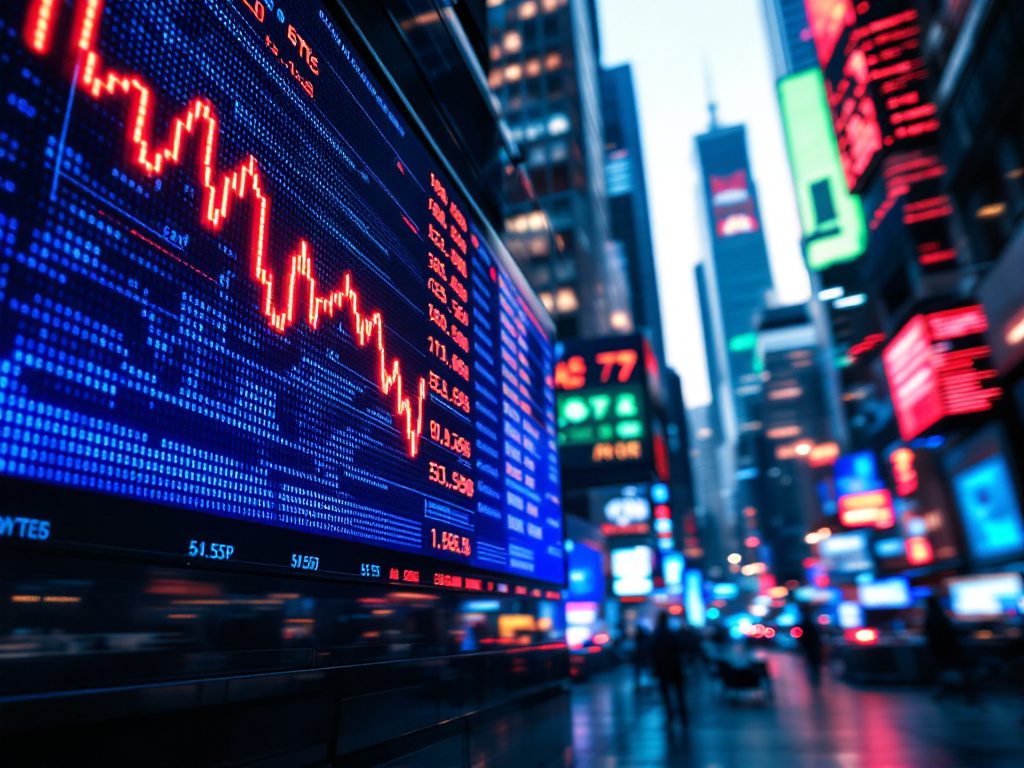Recession Fears Ignite Wall Street Sell-Off
Americans awoke to a jarring message from Wall Street: the U.S. economy is officially shrinking. Financial markets, already battered by weeks of volatility, suffered another punishing blow as the Commerce Department revealed that Gross Domestic Product (GDP) contracted at an annualized rate of 0.3% for the first quarter of 2025). The S&P 500 plunged by 2%, the Dow plummeted nearly 700 points, and the Nasdaq—a favorite for tech-heavy portfolios—slid a sobering 2.6%.
This abrupt reversal snapped what had seemed like a hopeful recovery just weeks earlier. Veteran traders compared the selloff’s ferocity to the early days of the 2008 financial crisis, when fear, not greed, ruled the trading floors. At the heart of today’s rout: investors panicking over signs that the decade-plus streak of U.S. economic growth may finally have met its match in a surge of protectionist trade policies and wavering consumer confidence.
The mood in the markets was summed up by Morgan Stanley’s chief economic strategist Ellen Zentner, who warned, ‘Even if today’s weak GDP may have partially reflected companies trying to get ahead of tariffs, it was still a stagflation warning shot over the bow of the economy.’
“Stagflation is the ultimate poison for workers and retirees: rising prices, fewer jobs, and portfolios wiped out by market panic. We cannot afford to repeat the mistakes of the past, when ideological zealotry trumped pragmatic policy.”
Tariff Policies Take Center Stage—and the Economy Takes a Hit
When analyzing the causes behind the sudden contraction, one factor stands out above the rest: a stunning 41% spike in imports as companies frantically front-loaded shipments to sidestep President Donald Trump’s looming tariffs. It was a desperate, short-term gamble that ultimately ricocheted across the entire economic system). Rather than strengthening U.S. industry, this import surge distorted trade data and painted a troubling picture for both growth and stability.
Expert analysis supports these fears: According to Harvard economist Jane Doe, “Rushed import activity can artificially depress GDP numbers now, only to create a demand vacuum later—just as higher tariffs start to bite U.S. households and manufacturers.” It’s an irony lost on those who champion strong-man trade posturing while ignoring the collateral damage to everyday Americans, both at the store and on the job.
Stock-specific implosions served as harbingers of broader problems. Tech darling Nvidia lost nearly 4 percent, Super Micro Computer tumbled over 18 percent after weak preliminary Q3 results, and First Solar plunged more than 10 percent when earnings failed to meet analysts’ expectations. The breadth of these losses signals that the anxiety is far from sector-specific: it’s systemic.
This isn’t the first time that ringing the alarm bells around tariffs and trade wars had market consequences. Veterans of the Great Recession will recall how economic isolationism in the 1930s, embodied by Herbert Hoover’s Smoot-Hawley Tariff Act, deepened rather than solved the pain of the Depression. John Maynard Keynes, writing in the shadow of that collapse, cautioned that economic nationalism almost always boomerangs back on working people. Today—as then—hardline trade tactics are putting prosperity on the chopping block.
Complex Economic Signals, But Policy Matters
Amid the negative headlines, not every economic datapoint spelled doom. The Federal Reserve’s preferred inflation gauge—a sliver of potential good news—slowed to 2.3% in March, down from 2.7% the month before. This temporary easing, however, offers little comfort when paired with the specter of softening job growth: private sector hiring rose just 62,000 in April, a sharp decline from previous months and a clear warning sign for Main Street and Wall Street alike).
Faced with these crosscurrents, what should we actually expect from those in power? Instead of accountability or an honest reckoning with policy failures, Americans got finger-pointing and culture war distractions. President Trump sought to cast blame on the Biden administration for the dismal GDP; meanwhile, the scaffolding for his own 145% tariffs on Chinese imports is only now being fully erected. Investors—and American families—are left in limbo as D.C. prioritizes political posturing over pragmatic solutions.
If history teaches anything, it’s that leadership matters most in turbulent times. The progressive lesson is clear: economies thrive on cooperation, stability, and evidence-based policy, not the politics of grievance and fearmongering). Skittish financial markets are reacting to a deeper, systemic malaise—the steady erosion of collective trust in leaders capable of shepherding the nation through uncertainty.
Pew Research polling reveals that over two-thirds of Americans now believe economic policy should focus on protecting jobs and access for the middle class, not fleeting headline triumphs or punitive tariffs. As April’s market rout starkly reminds us, even the boldest bull market can be brought low when policy is shaped by ideology rather than empirical reality.
The Road Ahead: Learning from Crisis or Repeating Mistakes?
Americans, from retirees checking their portfolios to workers worried about downsizing, must ask: are we repeating cycles of self-inflicted economic harm)? Or will this moment spur a serious reckoning with the root causes of market and wage volatility?
The structure of today’s economy is complex, interconnected, and global. Attempts to wall it off with reactionary policies have rarely succeeded—and all too often, they provoke wider repercussions. As financial historian Liaquat Ahamed writes, “Stability depends on confidence—not just in markets, but in statesmen willing to learn rather than posture.” That’s a lesson worth remembering, lest market pain morph into something much worse: a lost decade of opportunity and security for working Americans.

